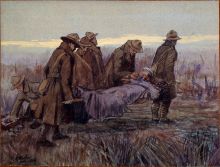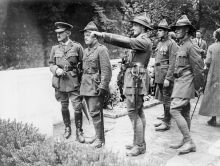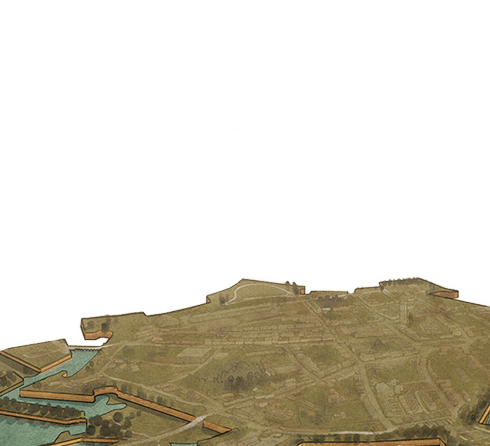Glossary
First World War & military vocabulary
Road to Le Quesnoy
Armistice
A mutual agreement between parties at war that suspends hostilities. It does not necessarily mean the end of a war, but is used as a formal method to recognise the suspension of fighting.
Army
An operational unit composed of two or more Army Corps and supporting units, often numbering several hundred thousand men.
Army Corps
An operational unit composed of two or more divisions and supporting units, numbering 30-40,000 men.
Bridgehead
An area that has been seized on the enemy-held side of an obstacle (often a river), with a view to engaging in a further advance. Once a bridgehead is established, it allows the military force to ferry men and supplies forward, and continue to advance.
Division
Numbering over 18,000 men, in 1916 the New Zealand Division consisted of 3 infantry brigades, 4 field artillery brigades, a mounted rifles regiment and numerous smaller engineer, signals, medical, labour, logistic, trench mortar and machine gun units. Supporting the Division in a non-combat role was a large administrative and support structure composed of medical, training and administrative units.
Field Artillery Batteries and Brigades
New Zealand Field artillery batteries consisted of either six 18-pounder field guns or six 4.5-inch howitzers. A field artillery brigade consisted of 3 batteries of 18-pounders and 1 battery of 4.5-inch howitzers. By 1916 four such field artillery brigades were included in the New Zealand Division, in addition to 1 heavy, 3 medium and 3 light trench mortar batteries.
Firefight
A military term referring to a heavy exchange of small arms fire between opposing infantry.
Infantry Battalion
Infantry battalions were commanded by a lieutenant colonel and were composed of 4 companies. At full strength a battalion numbered over a thousand men, but would usually go into action with less than 800. After severe fighting battalion strengths could fall dramatically to as few as 300 or 400 men. Medical, signalling and logistics troops were also contained within a battalion.
Infantry Brigade
New Zealand Infantry brigades were composed of 4 infantry battalions and at full strength numbered over 4,000 men, commanded by a brigadier-general. Whereas British infantry brigades were reduced to only three battalions in 1918, New Zealand infantry brigades retained their 4-battalion strength throughout the war, making the New Zealand Division one of the strongest in the British and Commonwealth armies.
Infantry Company
Infantry companies were commanded by Majors or Captains and consisted of a small headquarters and 4 platoons, totalling about 227 men at full strength. 4 companies formed a battalion.
Infantry Sections and Platoons
The smallest tactical unit within an infantry battalion, the infantry section consisted of 12 men led by a non-commissioned officer. At the beginning of the war almost all infantry sections were composed exclusively of riflemen, but by 1918 they also contained specialised bombing and light-machine-gun personnel. 4 Sections were normally required to form an Infantry platoon commanded by a junior officer.
Stormtroops
Also known as Stormtroopers or Sturmtruppen, Stormtroops were German soldiers trained for fast attacks to overwhelm enemy trenches or fortified positions. Stormtroops would usually attack after an artillery bombardment on the enemy position, carrying rifles, machine guns, large pouches or bags of grenades, and hand-to-hand fighting weapons such as knives or clubs.



